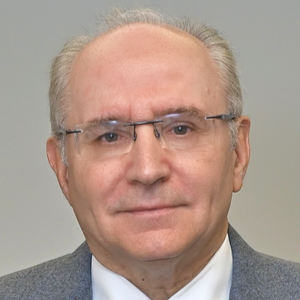One of the most common concerns clients have about transferring a home that is subject to a mortgage to an inter vivos trust (a trust created during one’s lifetime) is whether doing so will trigger the due-on-sale (“DOS”) clause of the mortgage. Most mortgage agreements contain a provision stating that upon the conveyance of property subject to the mortgage, the entire outstanding amount of the mortgage is immediately due and payable to the lender.
Fortunately, this is not always the case, thanks to the Garn-St. Germain Depository Institutions Act of 1982 (“Garn-St. Germain”). Indeed, Garn-St. Germain is not a French liqueur but an act of Congress that deregulated savings and loan associations, allowed for adjustable rate mortgages, and provided protections against the DOS clause of mortgages. The Bill is named after Congressman Fernand St. Germain and Senator Jake Garn.
The protections of Garn-St. Germain do not apply to commercial real estate, but rather, only to residential real estate containing less than five (5) dwelling units, including a lien on the stock associated with a unit in a cooperative housing corporation, or on a residential manufactured home.
For purposes of Garn-St. Germain, a “lender” is defined as “a person or government agency making a real property loan or any assignee or transferee, in whole or in part, of such a person or agency. A “real property loan” includes a loan, mortgage, advance, or credit sale that is secured by a lien against the property, the shares of stock associated with a cooperative apartment, or a residential manufactured home, whether real or personal property. (A “residential manufactured home” is defined in Section 5402(6) of Title 42 which is used as a residence.)
Garn-St. Germain is applicable in all U.S. States and Territories, the District of Columbia, and the Commonwealth of Puerto Rico. Although Garn-St. Germain generally permits the enforcement of DOS clauses, it created exceptions to its enforcement. The following are the instances where a DOS clause is not triggered:
- The creation of a lien or other encumbrance subordinate to the lender’s security instrument which does not relate to a transfer of rights of occupancy in the property;
- The creation of a purchase money security interest for household appliances;
- A transfer by devise, descent, or operation of law on the death of a joint tenant or tenant by the entirety;
- The granting of a leasehold interest of three years or less not containing an option to purchase;
- A transfer to a relative resulting from the death of a borrower;
- A transfer where the spouse or children of the borrower become an owner of the property;
- A transfer resulting from a decree of a dissolution of marriage, legal separation agreement, or from an incidental property settlement agreement, by which the spouse of the borrower becomes an owner of the property;
- A transfer into an inter vivos trust in which the borrower is and remains a beneficiary and which does not relate to a transfer of rights of occupancy in the property; or
- Any other transfer or disposition decided in regulations presented by the Federal Home Loan Bank Board.
A lender may not exercise its option pursuant to a DOS clause wherein any of the above exceptions exist. For most consumers, the exceptions defined above are of critical importance as they are occurrences of everyday life that a mortgage holder might encounter. The death of a joint tenant or tenant of the entirety or the transfer to a relative resulting from the death of the homeowner are in most instances occurrences beyond the control of the mortgage holder and should clearly be exempt from the DOS clause of a mortgage.
Paragraph (8) alone expressly exempts the transfer to an “inter vivos trust” (again, a trust created during life as opposed to a testamentary trust, which is created under the terms of one’s Last Will and Testament) wherein the borrower is and remains a beneficiary and which does not relate to a transfer of rights of occupancy in the property. Thus, the transfer of one’s home as defined by Garn-St. Germain to a Revocable Living Trust (“RLT”) or to an Irrevocable Medicaid Asset Protection Trust (“MAPT”) where the mortgage holder remains a beneficiary and retains the right to the use and possessions of the premises during mortgage holder’s lifetime will not trigger the DOS clause of the mortgage.
It should be noted that both MAPTs and RLTs give to the Grantor (or creator) of the trust the right to the use and possession of the Grantor’s home, thereby avoiding the trigger of the DOS clause with respect to residences. Additionally, Garn-St. Germain does not require that the lender be given any notice of said transfer to the trust.
Since 1982, Garn-St. Germain has been of immense benefit to consumers who have mortgages on their homes subject to a DOS clause. It allows consumers to make the permitted conveyances of property to certain types of trusts without concern that the DOS clause will be triggered.
Anthony J. Enea is the managing attorney of Enea, Scanlan and Sirignano, LLP of White Plains, New York. He focuses his practice on Wills, Trusts, Estates and Elder Law. Anthony is the Past Chair of the Elder Law and Special Needs Section of the New York State Bar Association (NYSBA), and is the past Chair of the 50+ Section of the NYSBA. He is a Past President and Founding member of the New York Chapter of the National Academy of Elder Law Attorneys (NAELA). Anthony is also the Immediate Past President of the Westchester County Bar Foundation and a Past President of the Westchester County Bar Association. He is also fluent in Italian. He can be reached at (914) 948-1500 or at a.enea@esslawfirm.com.
















